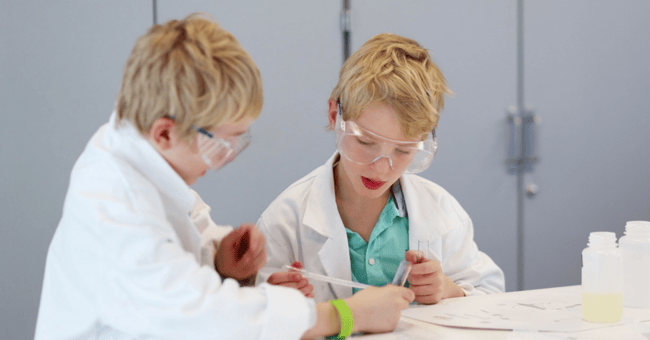
Coming up with creative, fun, and collaborative STEM (and STEAM) lesson plans is easier than ever thanks to Microsoft’s Hacking STEM library. From building machines that emulate human physiology to creating contraptions that help students understand speed, earthquakes, and electricity, these projects and activities are teacher-tested, student-focused, and budget-friendly.
Each complete lesson plan uses commonly found materials and includes a step-by-step guide, a customized Excel workbook, and a list of the technical and supply requirements (plus a shopping list!) to adequately capture the data necessary to learn.
- The Anemometer: Students learn to understand wind by creating both basic and connected anemometers. From analyzing windspeed manually to physically representing the wind speed for locations around the world (using live data from a global weather service, no less), these motorized and sensor-enabled anemometers will blow them away!
- The Robotic Hand: This project actively integrates robotics with life science using materials like cardboard, string, straws, and servo motors to create a robotic hand. This project is not only hands-on, it’s also “hands in;” by the end of it, students create a glove that senses and tracks their own flexion while measuring the strength and dexterity needed to complete a certain set of tasks.
- The Speed Trap: Developed in partnership with the Mattel Children’s Foundation, this project uses a Hot Wheels ® car and track to measure speed by learning about forces and motion and is perfect for 4th through 8th graders who are always on the move.
- The Seismograph: Predicting earthquakes is one thing; visualizing them is another. The California Academy of Sciences and KQED joined together to create a lesson plan aimed to help students who have never experienced a tremor, and as those who have them as part of their daily lives, understand plate tectonics.
The goal of both STEM and STEAM is to make science, technology, engineering, math, and art both fun and accessible for both the students gearing up to learn and the teachers responsible for making it happen. Microsoft’s library of activities includes everything from weekly projects to “bite-size” projects that take just 15 minutes to 1 hour of classroom time, making it a great resource for teachers who want to make the most of STEM subjects.
This isn't the first time that Microsoft has made things engaging for students, and even Windows 10 has contributed. For other ways to incorporate STEM and STEAM into your curriculum, please contact us.

